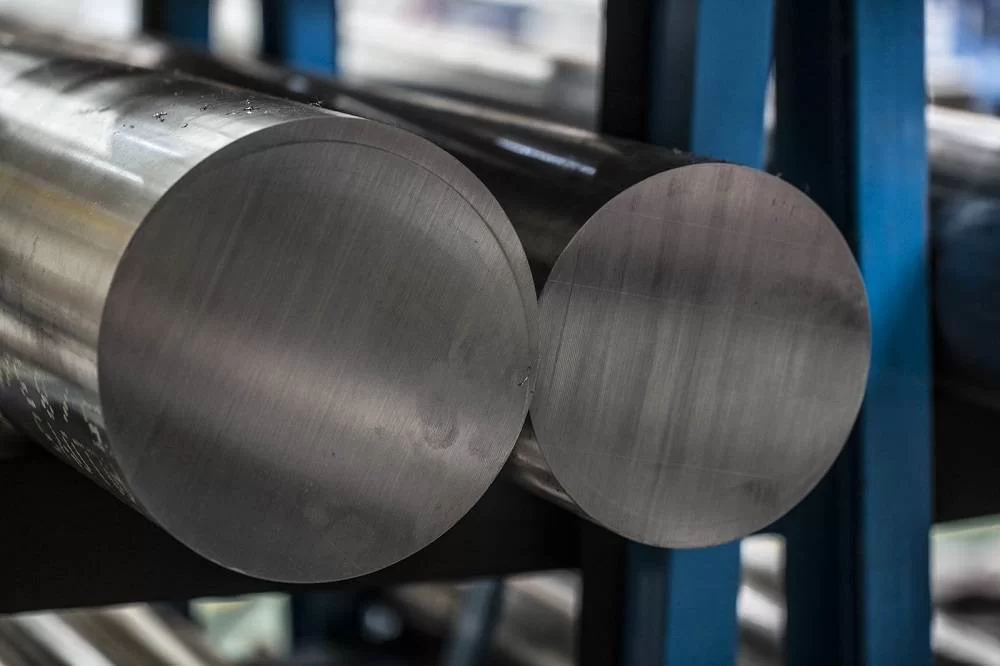Ssc-6mo is a super austenitic 6% molybdenum alloy that is more resistant to chloride pitting, creepage and stress corrosion cracking than standard 300 series and standard biphase stainless steels. It can also be used as a cost-effective alternative to nickel-based alloys for applications requiring excellent corrosion resistance, strength, formability and weldability. Specified as (UNS N08367), SSC-6MO competes directly with AlloyAL6XN.
The high nickel (24%) and molybdenum (6.5%) contents contribute to resistance to stress corrosion cracking of alloy chloride, while the molybdenum content also provides resistance to chlorination pitting. High levels of chromium (21%), molybdenum and nitrogen (0.22%) all produce excellent corrosion resistance.
Due to the high nitrogen content, the tensile strength of SSC-6Mo is higher than that of ordinary austenitic stainless steel. The ASME design stress margin of SSC-6MO is 75% higher than that of 316L and more than twice that of Copper-nickel alloy.
The toughness and ductility of SSC-6MO make it easy to manufacture. Ssc-6mo welds and forms more easily than any super duplex stainless steel or high alloy ferritic stainless steel with considerable corrosion resistance.
One of the advantages of nitrogen-rich stainless steels such as SSC-6MO and biphase alloys is their higher strength compared to conventional austenitic stainless steels. Combined with the corrosion resistance of the SSC-6MO, the higher strength levels allow the construction of cells with thinner cross sections. At 200°F, the stress of SSC-6MO is 66% higher than that of 316L. It retains its strength even at high temperatures. Ssc-6mo is easy to manufacture using standard practices of austenitic stainless steel.
The most common cause of corrosion failure of stainless steel is local attack caused by chloride. Especially pitting, crevice and stress corrosion cracking. The SSC-6MO is positioned as an upgrade to austenitic stainless steel grades 316L, 317L and 904L. It also outperforms alloys 20 and 825 in corrosion resistance in a variety of corrosive environments. Ssc-6mo is also considered as an alternative to high-cost nickel-based alloys such as alloys G, 625,276 and titanium in many applications.
The pitting resistance of austenitic stainless steels can be directly related to the alloy composition, where chromium, molybdenum and nitrogen are percentages by weight. Pitting Resistance Equivalent Number (PREN) The following formula is used to measure the phase pitting resistance of an alloy - the higher the value, the better the pitting resistance.

The high content of molybdenum and nitrogen in SSC-6MO has a beneficial effect on crevice corrosion in solutions containing chlorine, oxidation and acid. Ssc-6mo also has better creepage resistance than 316L, 2205 and 904L in seawater. The critical crevice temperature (CCCT) test is commonly used to compare crevice corrosivity of various alloys.
Chloride stress corrosion cracking (SCC) is one of the most serious forms of local corrosion. Higher temperatures and reduced pH will increase the likelihood of SCC. It has been determined that the alloy is more tolerant to SCC when the nickel content increases above 12% and the molybdenum content exceeds 3%. Ssc-6mo is superior to standard 300 series austenitic stainless steels and some duplex stainless steels. At temperatures below 250°F (121°C), SSC-6MO is very resistant to SCC. The initial temperature of SCC increases with the decrease of chloride content. Care must be taken when selecting alloys for applications with temperatures higher than 250°F (121°C).
Chloride stress corrosion cracking (SCC) is one of the most serious forms of local corrosion. Higher temperatures and reduced pH will increase the likelihood of SCC. It has been determined that the alloy is more tolerant to SCC when the nickel content increases above 12% and the molybdenum content exceeds 3%. Ssc-6mo is superior to standard 300 series austenitic stainless steels and some duplex stainless steels. At temperatures below 250°F (121°C), SSC-6MO is very resistant to SCC. The initial temperature of SCC increases with the decrease of chloride content. Care must be taken when SSC-6MO is very good in acetic acid, formic acid and phosphoric acid as well as sodium bisulfate. Satisfactory in oxalic acid, sodium hydroxide and sulfamic acid, but not in 10% sulfuric acid solution.
Both the dilution (below 15%) of sulfuric acid at all temperatures down to boiling point and the concentration (above 85%) at low temperature are good for the solution of austenitic stainless steels. In pure sulfuric acid, the performance of SSC-6Mo is significantly better than 316L and slightly better than 904L. Its performance is comparable to that of the more expensive nickel-based materials, Alloy 20 and Alloy 825.
Excellent resistance of SSC-6MO is required in phosphoric acid process flows containing halide impurities. Alloy 20 and alloy 825 are usually used, and the resistance concentration of the alloy is higher than 45%.
AL6XNN is a registered trademark of ATI Properties Inc. The alloy is selected for applications with temperatures higher than 250°F (121°C).